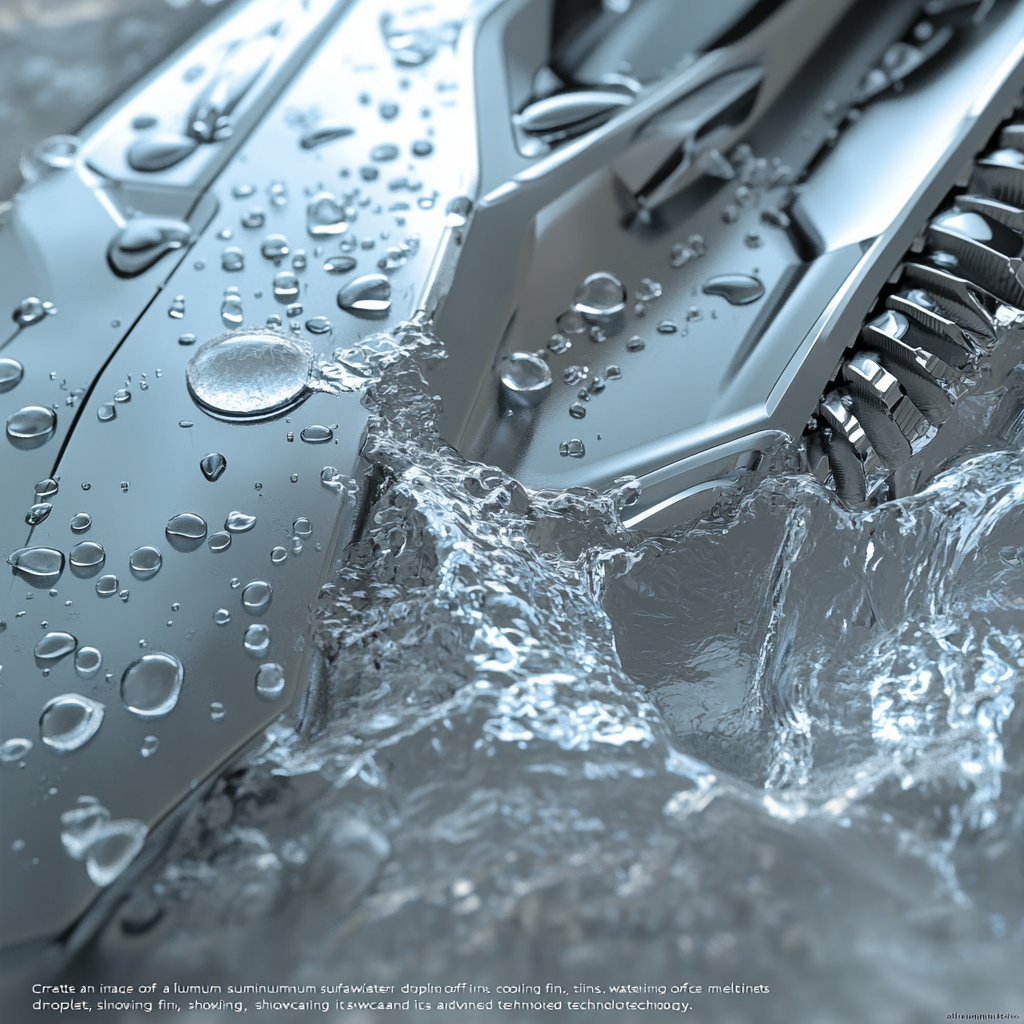
“Revolutionizing Surface Technologies with Scalable Aluminum Innovations”
In the world of materials science, much like in cooking, the secret to brilliant outcomes often lies in how you combine your ingredients – or in this case, how you engineer surfaces. If you’ve ever marveled at how a simple, shiny surface can lead to something as fascinating as self-cleaning, anti-icing, and cooling technologies, then hold onto your hats. Researchers from Rice University and the University of Edinburgh have conjured up a method that's shaking things up in the lab – and it’s nothing short of a marvel.
Now, let’s unpack this innovation with the same curiosity we tackle a new recipe. The genesis of this remarkable breakthrough is pinned down to a clever technique that allows the creation of aluminum surfaces with carefully patterned topographies. We’re talking about a world where cooling technologies can be more efficient, surfaces can clean themselves, and winter frost turns into a mere annoyance rather than a menace. These developments aren’t just academic musings; they could very well transform real-world applications.
So, how did our shiny heroes – those engineers – conjure this up? The method they’ve engineered involves a dose of creativity, a pinch of precision, and a series of sophisticated steps. The genius of this technique is revealed in the details: vinyl masking allows polished aluminum surfaces to be dressed up in patterns that are anything but ordinary. No tape or clumsy adhesive mishaps here; instead, they employ precision-cut vinyl that’s as sharp as a knife.
Next, they embark on an etching journey – a two-step process, as enthralling as a good old-fashioned cooking show. This isn’t just a splash and go; it involves a meticulous balancing act of chemical and physical treatments that dance together to yield micro- and nanotextures on the aluminum. These textures are the stars of the show, allowing us to play with wettability like a chef tweaking a secret sauce until it’s just right. At the end of this journey, advanced imaging techniques swoop in like food critics, analyzing surface patterns with a level of scrutiny that would make Gordon Ramsay proud.
Let’s slice into the possible applications of these magical surfaces. Cooling technologies are the standalone champions here. Imagine electronics that run cooler, thanks to improved droplet shedding during condensation – that’s like discovering a way to make your favorite dish without the usual hassle. Our aluminum surfaces offer a slick way to reduce thermal resistance, which is particularly crucial in places like data centers where heat is the enemy. These surfaces can enhance heat transfer and open up a whole new world of possibilities in thermal management. Picture pizza ovens that never overheat – that’s the kind of thermal efficiency we’re striving for!
But wait, let’s not stop there. Self-cleaning surfaces step into the spotlight, reminding us of nature’s quirks. You see, when you pattern aluminum using the methods we’ve explored, you can wind up with surfaces that either repel water like a professional dodgeball player or embrace it, depending on how you treat them. The magic of superhydrophobicity, akin to what you’ll find on the illustrious Lotus Leaf, means dirt and grime are elegantly eliminated, making these surfaces akin to an anti-mess culinary marvel. Oh, and for those wondering, that photocatalytic spark – think of titanium dioxide – can add an extra zing to cleaning action when sunlight throws its rays down like a benevolent chef sprinkling seasoning on a dish.
Now, let’s turn the page to winter and its icy grip. How do you protect surfaces from becoming slippery crime scenes in the cold? The answer lies in these textured aluminum surfaces. They are not just about looking good; they’re functional too. With their superhydrophobic characteristics, these surfaces deter water from spreading out, thereby preventing ice formation. It’s as if you’ve made a dish where the ingredients don’t stick together, each existing in its own perfect little bubble, avoiding any sticky situation. They can also be treated for corrosion resistance, akin to making sure your trusty kitchenware doesn’t rust after a hundred uses. And we all know how important it is to keep our kitchen – or in this case, our surfaces – in tip-top shape.
In conclusion, what we’re witnessing with the advent of these topography-patterned aluminum surfaces is not just a breakthrough in materials science; it’s a new chapter in how we could interact with everyday challenges like heat management, cleanliness, and seasonal woes. The collaboration that birthed this innovation speaks volumes about the power of teamwork across borders, a collective stirring of concepts and knowledge that opens the door to novel solutions.
So here we are at the threshold of unprecedented possibilities, urging you to imagine a world brightened by these advancements. As these scientists tinker and perfect their craft, let’s stay curious and engaged. After all, knowledge is the spice of life, and staying updated will keep you ahead of the curve.
Want to stay up to date with the latest news on neural networks and automation? Subscribe to our Telegram channel: @channel_neirotoken
Remember, the journey of materials science and innovation is just as fascinating as any culinary discovery, and keeping yourself in the loop could make you part of the next big breakthrough!

